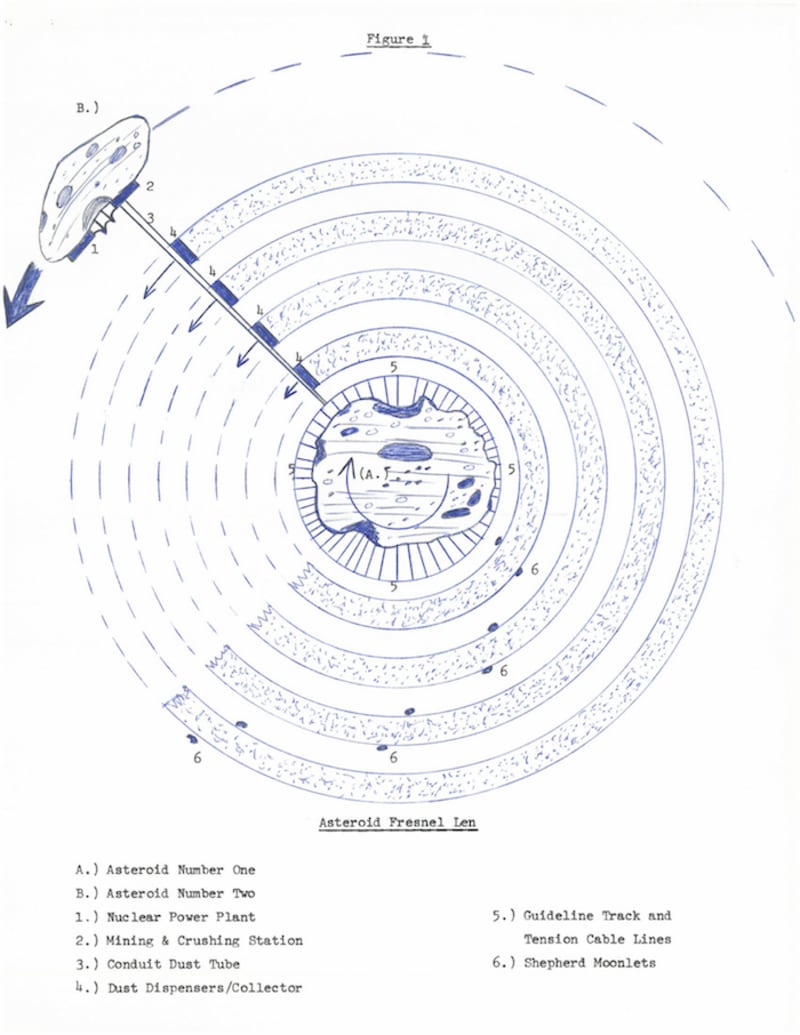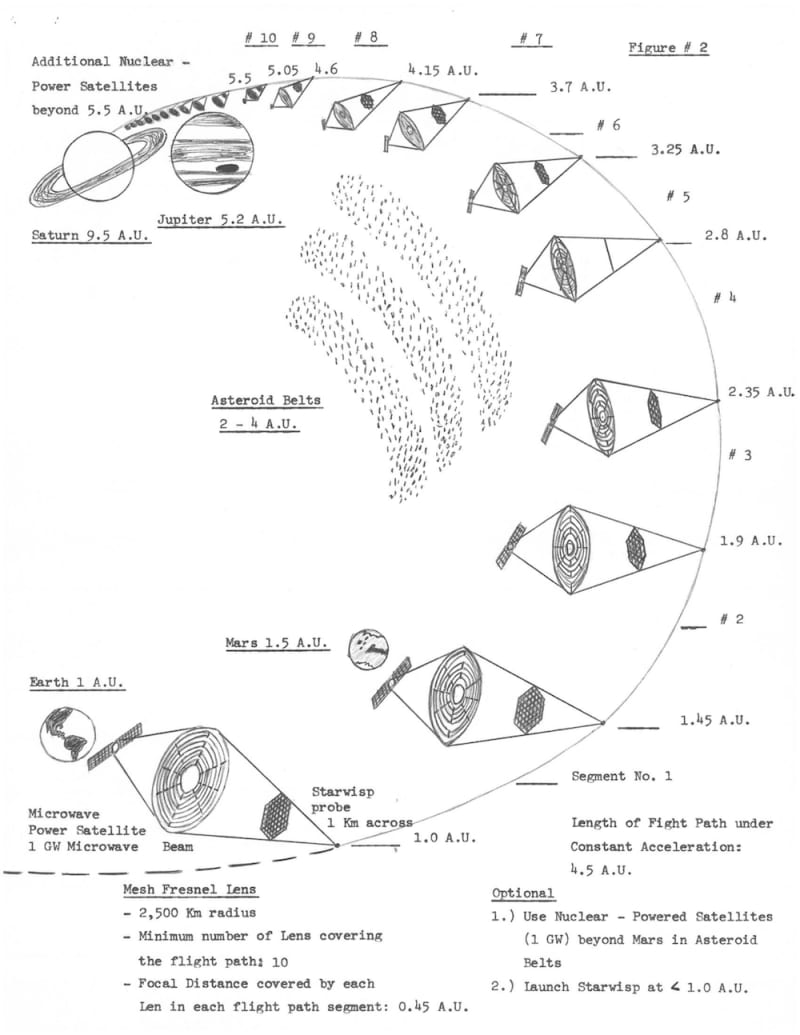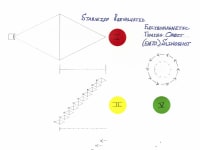In an attempt to improve upon the ideas originally proposed by Dr. Robert L. Forward in his article: Starwisp: An Ultra – Light Interstellar Probe (J. Spacecraft, Vol. 22, No. 3, May – June 1985, PP. 345 – 350), a previously written and unpublished paper entitled: "Starwisp Reevaluated" and later associated follow up ideas were developed. The enclosed proposed contest ideas in Figures 1 and 2 have been taken from this reassessment. The third figure is the contest submission diagram which is a composite picture that consolidates the evolving thoughts developed through deductive reasoning.
In Figure 3, Caption I represents the original power source, the Fresnel Len and the Starwisp spacecraft configuration proposed by Dr. Robert L. Forward.
Caption II shows the modification where the distance between the power source and Starwisp are shortened. This results in both the size and mass of the Fresnel Len being reduced as a consequence of the application of the “inverse square law” being applied in reverse. Concurrent with this change, the size and mass of the single large power source is similarly reduced by using a number of smaller power units spread out over the same transmission distance.
Caption III depicts situation when the distance between the power source and Starwisp is sufficiently reduced, the realization was made that the Fresnel Lens were no longer required. In essence then, Dr. Forward's Fresnel Len proposal is replaced by a series of smaller transmitters spaced out over the same distance as the original Starwisp flight path design.
Caption IV shows the original powered flight plan distance being extended by adding more transmitters long the extended flight path in order to further increase Starwisp's terminal end velocity.
Even with these improvements, the Starwisp proposal is still not practical due to the large mass of the remaining numerous smaller transmitters used, their distance to their installation sites from Earth, and the need to synchronize and maintain them along the intended flight path on the mission’s timetable schedule.
Caption V depicts the recommended Electromagnetic Timing Orbit (EMTO) Slingshot solution for saving this new modified Starwisp proposal. The system design insight realized was the total mass of the transmitters can be reduced while their overall utilization rate can be increased by repeatedly reusing that starts with initial multiple re-firings that expands in to continuous operation later in the mission – similar to a particle accelerator, thereby facilitates Starwisp attaining its desired terminal end velocity. This system would use 1,000 pair of transmitters in a circular ultra – synchronous orbit around the Earth (circumference: 299,792,458.0 m with a radius: 41,335,310.0 m above the Earth’s surface, and with each transmitter “draft tube” equal to 299,792.458 m)
By comparison with the Breakthrough Starshot project, the EMTO Slingshot method has both positive and negative features. For example, the nuclear reactors recommended for EMTO Slingshot could later be reused to power the Ad Astra Rocket Company’s VASIMR “plasma jet” engine, or conversely, they could be reused in mining the Moon or asteroids.
Like this entry?
-
About the Entrant
- Name:Keith William Steeves
- Type of entry:individual
- Patent status:none








